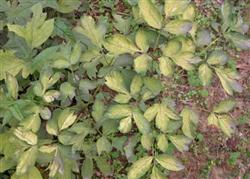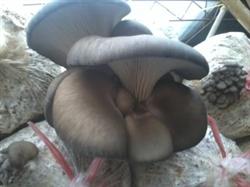Diagnosis and treatment of peony yellow leaf disease

In the process of cultivation and management of peony, especially in late spring and early summer, the leaves often turn yellow or even dry charred. There are many reasons why peony leaves turn yellow. first of all, we must find out the reasons in order to prescribe the right medicine to the case. A yellow leaf caused by excessive fertilization. Peony generally uses chicken dung, bean cake, oil dregs and other organic fertilizer as topdressing or base fertilizer, excessive fertilization and soil water shortage will produce fertilizer damage. The main performance is that the new leaves are thick and glossy, but the leaves are concave and convex, and the old leaves gradually turn yellow and fall off, so they should be properly watered to dilute nutrients. Dry yellow tree peony belongs to fleshy root system, which should be watered less, but excessive drought will lead to water deficiency and yellowing of peony leaves, especially in seedlings. The symptom is that the center and new leaves are normal, and the lower leaves and inner leaves are dry and yellow at first, and should be watered once in the morning or evening. If the alkali yellow tree peony grows in the alkaline soil, the leaves will lose green and turn yellow. The symptoms begin between the new leaf veins, while the leaf veins, especially the main vein, remain green, and the phenomenon of yellow and green is very obvious. With the aggravation of the yellowing degree, the leaf veins gradually lost green, then the whole leaf turned white, the leaf margin scorched and the leaf fell off. In severe cases, the top of the branch withered, resulting in the death of the whole plant. For this "yellowing" phenomenon, 0.2% to 0.3% ferrous sulfate solution can be sprayed on the leaf surface for 3 to 5 times, the concentration should not be too high, and should be used with. Hungry yellow is the yellow leaves caused by the lack of certain elements, and the symptoms are often characterized by yellowing in a large area. When the peony is deficient in phosphorus, the plant grows slowly and short, thin, the leaves are small and easy to fall off, and the color is generally dark green or grayish green, lack of luster. It starts with the old leaves at the base of the stem and gradually expands to the upper part. When potassium is deficient, the old leaves and leaf edges usually turn yellow, and then turn brown, scorching like burning, brown spots or patches appear on the leaves, but the leaves remain green in the middle, veins and near the veins. With the aggravation of potassium deficiency, the whole leaves became reddish brown or dry, necrotic and shedding, and the roots were short and easy to senescence early, and rotted seriously. Magnesium, manganese, boron, copper and other trace elements deficiency leaves will also appear yellowing, necrosis, leaf tip withering and other symptoms, should be combined with spraying potassium dihydrogen phosphate and micro-fertilizer after flowering to supplement nutrition. Peony pathological changes, leaves can also show uneven color, yellow and green mottled, that is, "mosaic". This is the most common symptom of viral disease and needs to be distinguished. Insect yellow peony is mostly harmed by grubs, mole crickets and other underground pests and nematodes, the leaves are green and yellowish, and even scorched leaves. The main characteristic of this symptom is the yellowing and scorching of the leaves of a single plant or several plants in a certain place. When this symptom is found, it should be checked in time and applied quickly to control underground pests. The cultivation land of rotten yellow peony is mostly continuous stubble for many years, in which there are many pathogens, especially Fusarium oxysporum in fungi, which cause the root and stem base of peony to rot, so the ability of absorbing water and fertilizer is weakened, and the lower leaves gradually turn yellow and fall off or scorch upwards. however, the color of the new shoot center and new leaf of peony is still normal. This is the yellow leaf symptom of root rot of peony during drought. The symptoms of decay after rain in summer are yellowish in tender leaves and dark yellow in old leaves. At this time, it should be combined with hoeing to spread fungicides or root irrigation to control root rot, or to soak the roots of seedlings in autumn and sprinkle them in the hole. In the process of daily cultivation and management of peony, once it is found that the leaves turn yellow and scorched, it is necessary to carefully observe, determine the cause and give reasonable treatment in time.
- Prev

Prevention and treatment of rotting Root and falling Bud of Peony
Botrytis cinerea is one of the most important diseases of peony in the world, and it also occurs in China from time to time, especially in Shanghai, Zhengzhou and other places. The disease can occur in the growing season of tree peony and does serious harm to young plants, causing lodging and wilting of seedlings. This is a kind of fungal disease, which is obvious to the leaves, stems and flowers of peony.
- Next

Types and prevention of deformities of Pleurotus ostreatus
Abnormal mushroom is a common physiological disease in the production of Pleurotus ostreatus, which seriously affects the yield and quality of Pleurotus ostreatus, and even loses its commercial value completely. This disease is mainly caused by improper management, and a few are caused by strain degradation, variation and virus infection. The main types of deformed mushrooms are: 1. The cap of Pleurotus ostreatus is small.
Related
- Fuxing push coffee new agricultural production and marketing class: lack of small-scale processing plants
- Jujube rice field leisure farm deep ploughing Yilan for five years to create a space for organic food and play
- Nongyu Farm-A trial of organic papaya for brave women with advanced technology
- Four points for attention in the prevention and control of diseases and insect pests of edible fungi
- How to add nutrient solution to Edible Fungi
- Is there any good way to control edible fungus mites?
- Open Inoculation Technology of Edible Fungi
- Is there any clever way to use fertilizer for edible fungus in winter?
- What agents are used to kill the pathogens of edible fungi in the mushroom shed?
- Rapid drying of Edible Fungi

